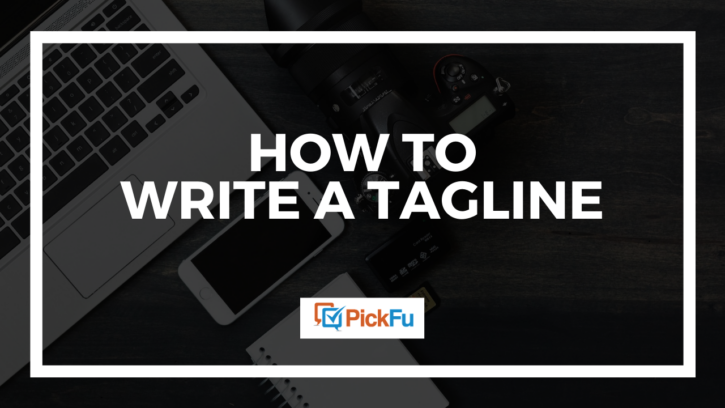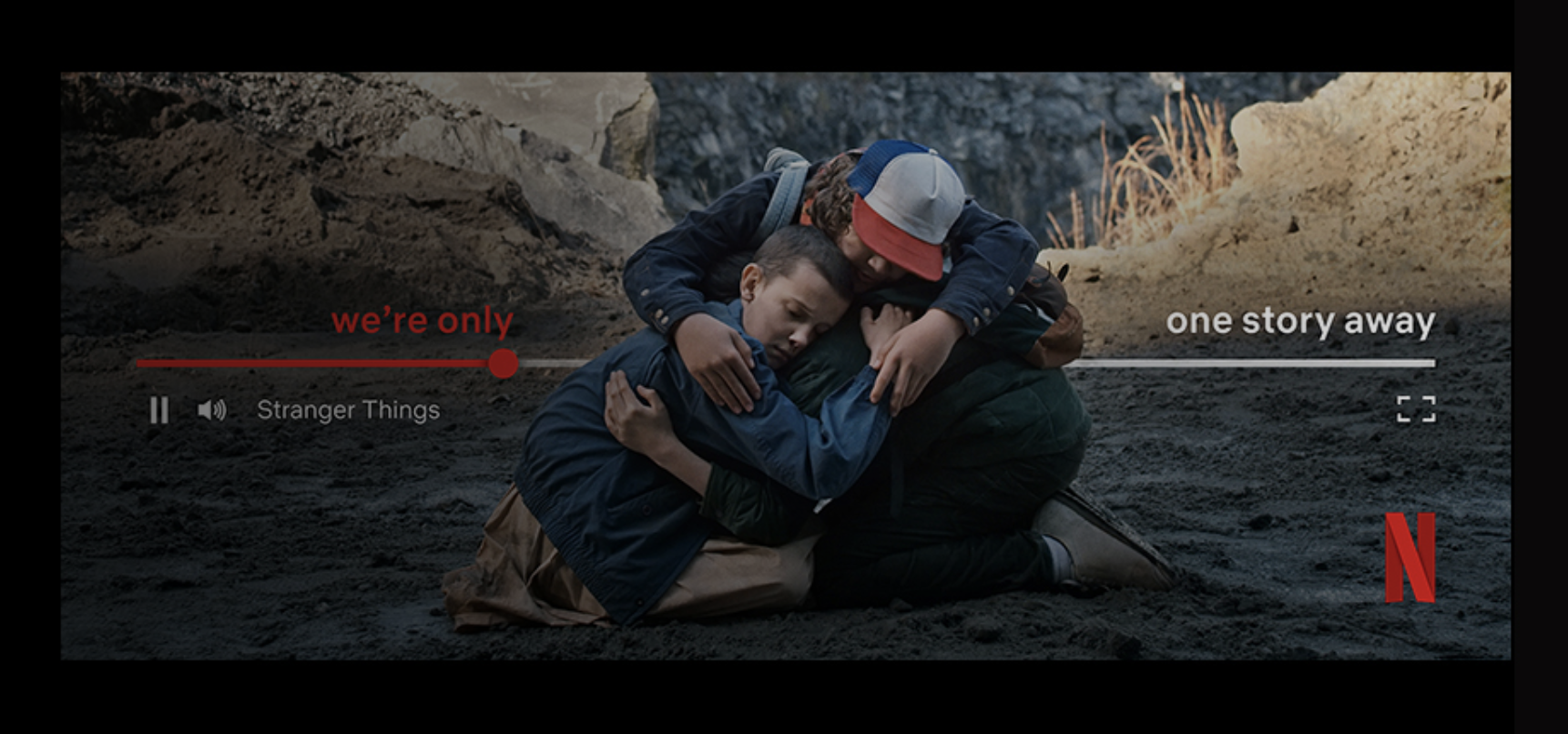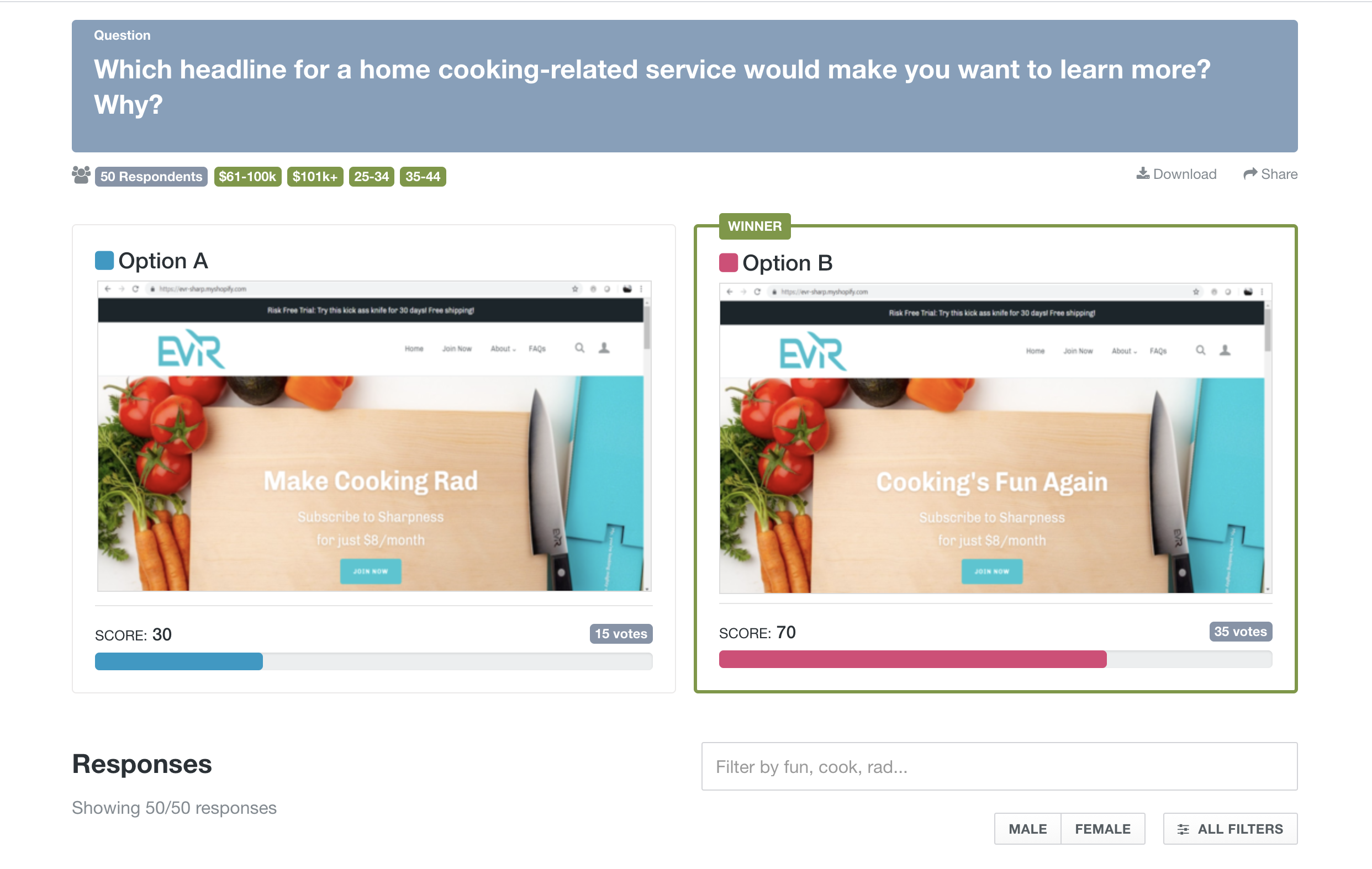We’re surrounded by taglines in our daily lives. The best ones break through the noise, get our attention, and prompt us to act. So how do you write a memorable tagline that will have a positive impact on your business? This guide covers everything you need to know.
What is a business tagline?
Merriam-Webster defines a tagline as “a reiterative phrase identified with an individual, group, or product.” When it comes to marketing, it’s much more than that.
In the truest marketing sense, a tagline is a carefully curated collection of meaningful words that will capture consumers’ attention quickly. It offers a succinct message about your company or brand.
Netflix’s tagline, “One Story Away,” is a good example. Those three words “perfectly encapsulate the passion for storytelling that lies at the heart of what Netflix — and the creators we work with all over the world — are trying to bring to our members,” said the company’s vice president of brand Eric Pallotta.
Why do you need a tagline?
You need a tagline to quickly and effectively communicate to your target audience who you are and why you provide value. A tagline differentiates you within your industry and sets you apart from your competitors. It lets people know what your brand stands for.
An effective tagline also builds value over time, ultimately becoming synonymous with your brand.
“Just Do It” will forever be linked to the unmistakable Nike Swoosh logo.
“Because you’re worth it” conjures up thoughts of lipstick and eyeliner. In fact, L’Oreal’s tagline was created in 1971. The company only slightly tweaked it about a decade ago to “Because we’re worth it” to better articulate absolute self-confidence.
What’s the difference between slogans and taglines?
While tagline and slogan are often used interchangeably, there are subtle differences between the two.
Slogans tend to be slightly longer than taglines. They encompass a company’s mission, vision, and its key benefits for customers.
Taglines, on the other hand, are catchy quips that drive brand perception. They evoke “an image of your brand in the minds of your customers…and enable people to make lighthearted associations with your brand,” according to HubSpot.
Let’s take a look at some well-known slogans and taglines, past and present.
- There are some things money can’t buy. For everything else, there’s MasterCard. This two-sentence slogan captures a larger idea behind the MasterCard brand. It doesn’t focus on selling the card, but rather on the benefit the card will bring to the user.
- Melts in your mouth, not in your hands. The M&M’s slogan immediately gets to its core proposition: chocolate that’s less messy and thus, more convenient.
- The Quicker Picker Upper. Bounty’s tagline taps into our brain’s attraction to repetition by using consonance, or similar sounds in close proximity. The tagline was so effective, the company used it for more than 50 years.
- Betcha can’t eat just one! With this tagline, Lay’s essentially dares us to try its product, assuming we can’t resist the crunchy, salty snack.
When it comes to succinct messages that conjure up the image and essence of a brand, these companies got it right.
How do you write a tagline?
Writing a tagline can be a fun and creative challenge, but it’s not a task that should be rushed. Put time and thought into these four steps and you’ll land on a tagline that packs a punch.
1. Write your company description
Before hammering out a tagline, you need to know exactly what your company stands for: its mission, vision, and values. Write it all out in a paragraph or two. Read it over. Edit and remove anything that doesn’t quite fit.
2. Trim the description to one sentence
Simplicity is key to this task. Pull from the most likable qualities of your company while choosing words and phrases that evoke emotion.
3. Tighten the sentence and polish the message
This is probably the most difficult step in the process. Come up with several contenders, then whittle them down to the most compelling words.
4. Split test your taglines
You’ve narrowed your taglines to a few options, and now you’re stuck.
Or maybe you’re convinced you’ve written the best tagline in the history of taglines. But how do you know if it will really resonate with customers? That’s where split testing comes in.
Split testing, also called A/B testing, lets you compare two versions of your tagline by presenting them randomly to a target audience and seeing how they perform.
Split testing taglines on PickFu is an easy and affordable way to get unbiased feedback quickly, often within 30 minutes. You can customize your audience from PickFu’s panel of 10,000-plus respondents to reflect your target market.
In the PickFu poll below, a business owner tested two tagline options for a cooking subscription service, focusing on a very specific audience: people between ages 25-44 with an income of at least $60,000.
You don’t need multiple options to run a split test on PickFu. You can create an open-ended poll with a single tagline to get deeper insights into what people like, or don’t like, about it.
In every PickFu poll, respondents submit written feedback so you’ll understand the why behind their votes.
Things to avoid when writing a tagline
While there are a lot of dos in tagline writing, there are also quite a few don’ts.
- Don’t be clever; be clear. Try too hard to sound smart or funny and you might confuse or alienate your audience. Clarity always wins.
- Cut the clichés. As tempting as they are, clichés can be the death knell of any piece of content, particularly a tagline. Taglines are short and compelling. Don’t waste valuable real estate with stale, overused phrases.
- Avoid industry jargon. Your tagline is meant for a large, general audience. Use common words that resonate with the masses.
- Don’t focus on yourself. Instead of stating what or who you are, your tagline should focus on how you provide value to your audience.
Writing an effective tagline for your business is a challenge. By taking the time to refine your messaging, test it on an audience of likely buyers, and analyze their feedback, you’ll come up with a tagline that hits the mark.
Learn more about using PickFu to your advantage in these articles on testing your business name and logo.







